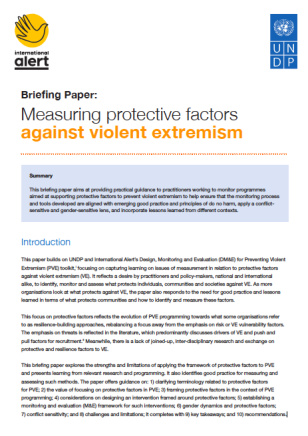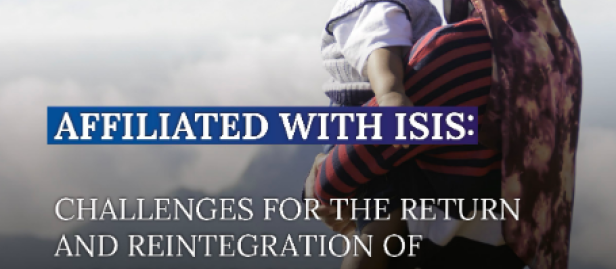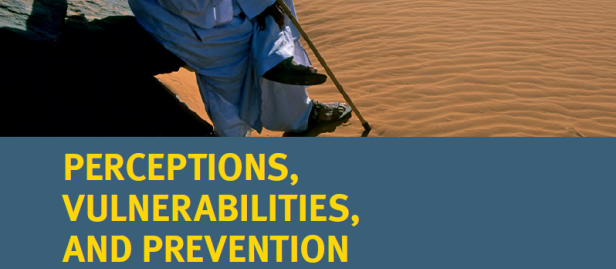Measuring protective factors against violent extremism

Measuring protective factors against violent extremism
October 22, 2020
This paper builds on UNDP and International Alert’s Design, Monitoring and Evaluation (DM&E) for Preventing Violent Extremism (PVE) toolkit,i focusing on capturing learning on issues of measurement in relation to protective factors against violent extremism (VE). It reflects a desire by practitioners and policy-makers, national and international alike, to identify, monitor and assess what protects individuals, communities and societies against VE. As more organisations look at what protects against VE, the paper also responds to the need for good practice and lessons learned in terms of what protects communities and how to identify and measure these factors.
This focus on protective factors reflects the evolution of PVE programming towards what some organisations refer to as resilience-building approaches, rebalancing a focus away from the emphasis on risk or VE vulnerability factors. The emphasis on threats is reflected in the literature, which predominantly discusses drivers of VE and push and pull factors for recruitment.ii Meanwhile, there is a lack of joined-up, inter-disciplinary research and exchange on protective and resilience factors to VE.
This briefing paper explores the strengths and limitations of applying the framework of protective factors to PVE and presents learning from relevant research and programming. It also identifies good practice for measuring and
assessing such methods. The paper offers guidance on: 1) clarifying terminology related to protective factors for PVE; 2) the value of focusing on protective factors in PVE; 3) framing protective factors in the context of PVE
programming; 4) considerations on designing an intervention framed around protective factors; 5) establishing a monitoring and evaluation (M&E) framework for such interventions; 6) gender dynamics and protective factors;
7) conflict sensitivity; and 8) challenges and limitations; it completes with 9) key takeaways; and 10) recommendations.

 Locations
Locations




